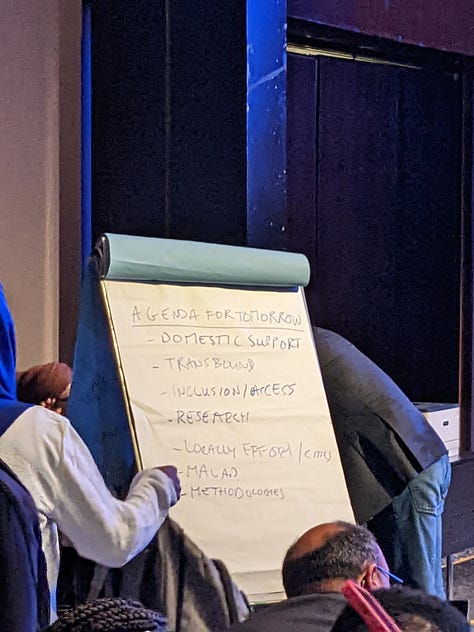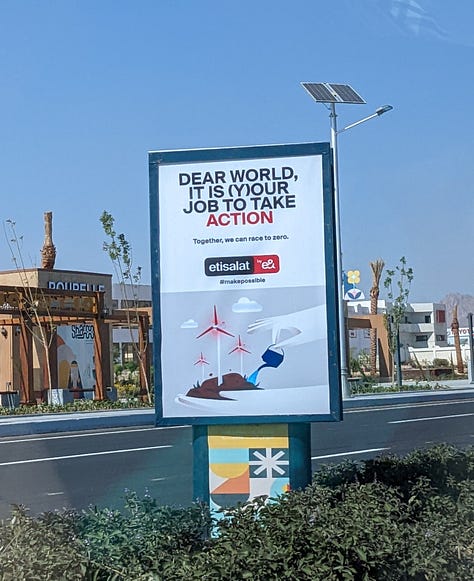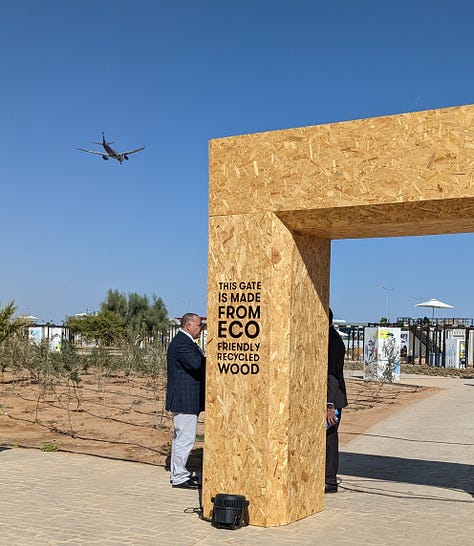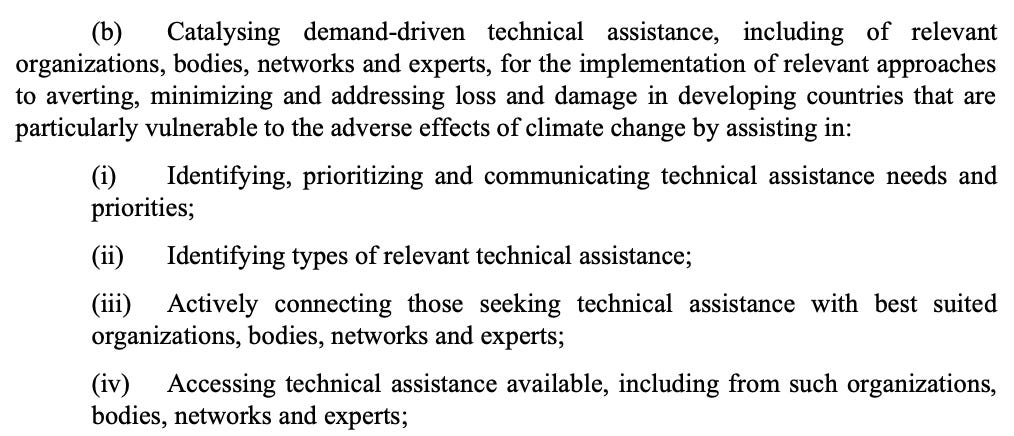COP27 is Burning Man for climate bureaucracy
It’s chaotic, ostentatious, and important in all the unimportant ways. Where do we go from here?
The Intergovernmental Panel on Climate Change (IPCC) – a group of hundreds of scientists across the world measuring and quantifying historic climate models, and the oracle of the scientific consensus – said in April of 2022 that it is “now or never if we want to limit global warming to 1.5°C.”
So everyone got together at COP27 in Sharm El Sheikh in November and said… How about never?
I was at COP27 as part of the Singapore Delegation (the home base of our publishing house), spreading the good word about our recently released book called Decarbonizing Asia. Sharm El Sheikh is usually a tourist trap for Russians and Italians with disposable income, but during these two weeks in November, it was terraformed into an elaborate military checkpoint. An hour-long conveyor belt of buses ferried googly eyed delegates from their hotel to the conference hall and then back to the hotel. As you barrel through the desert past hotels with exotic names like ‘Hollywood’ and ‘XPERIENCE,’ it’s hard not to be confronted with the obvious question… What are we all doing here?
As I quickly found out, the answer is mostly collecting merch.
Everyone who successfully makes it through to the “blue zone,” which is restricted to a coterie of sovereign and institutional “representatives,” gets a UN stamped water bottle and a tote bag. In a way, it's kind of poetic: We all went to the most important climate conference on the planet and all we got was a lousy container made out of fossil fuels and designed to hold a quickly depleting natural resource.
It has been almost three decades since the Conference of Parties (COP) began annually organizing all the nations in the world to solve THE issue: climate change.
You can probably guess that since this is the 27th meeting, it hasn’t been the radical institution everyone hoped for. It has become clear that we should not rely on the United Nations Framework Convention on Climate Change for solutions to… climate change, or for developing frameworks… but it is still great at throwing conventions.
It is the place where key conversations and solutions continue to emerge. But the most interesting ones still tend to happen outside of the institutional channels. This was the case with the Loss and Damages Fund almost thirty years ago at the very first COP, when the term “loss and damage” bounced around the sidewalks of Berlin but stayed far away from the negotiation rooms.
Today, that fund could provide the needed support to develop key adaptation infrastructure in countries that are struggling most with the effects of climate change.
This would be an incredible achievement… if it didn’t happen thirty years too late.
When the United Nations Framework Convention on Climate Change was first being crafted in 1991, the Alliance of Small Island States (AOSIS) proposed the creation of a global insurance pool to “compensate the most vulnerable small island and low-lying coastal developing countries for loss and damage arising from sea level rise.” The contribution to the fund would be determined by a nation’s historic emissions.
AOSIS was unequivocally rejected in 1991.
Now, in 2022, LDF has finally passed, but what does it actually guarantee?
The most detailed part of the “Mechanism for Loss and Damage” is in Annex I, Functions, 2(b)
In other words:
Talking about the needs of struggling countries
Identifying the needs of struggling countries
Introducing struggling countries to “bodies”
Finding the answers to the needs of struggling countries
Hmmm…
Alright, so maybe they will eventually figure it out, but how much money will all the rich nations offer?
Unclear.
Just to review… no money has been promised and no mechanism for evaluating damages has been articulated.
This is both why the United Nations is vital and why it is underwhelming. It is where important conversations emerge, and where key decisions take place, but the substantive action will likely not happen through the UN – unless you are willing to wait another 27 years.
The most interesting phenomena continues to be discussed on the periphery of these meetings. It is where the marginal conversations take root, dominant attitudes fade into obscurity, and some semblance of a viable future may emerge.
The Institute of Peace put it best, “Going forward, the most important and ambitious action on climate change may take place outside of the formal COP negotiations — and that’s okay. In fact, it may even strengthen the conference.”
The climate community should embrace this decentering of the UN and take the capacity of its marginal conversations seriously.
Images of poetic irony









This is both extremely informative and a whole lot of fun to read